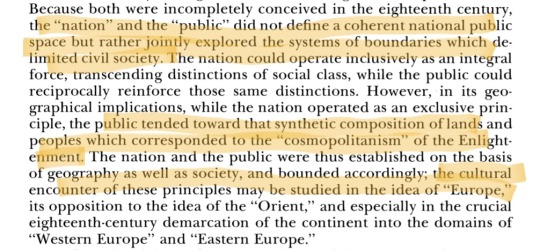#larry bourgeois
Text
BLAAAAZE!! 🔥🔥 This hair 😍
53 notes
·
View notes
Text
Les Twins performing in the Renaissance World Tour with Beyoncé 👑👑👑
13 notes
·
View notes
Text









W A T C H I N G
#MIB INTERNATIONAL (2019)#MEN IN BLACK INTERNATIONAL#MEN IN BLACK#CHRIS HEMSWORTH#TESSA THOMPSON#LIAM NEESON#Rebecca Ferguson#Kumail Nanjiani#Rafe Spall#Laurent Bourgeois#Larry Bourgeois#Emma Thompson#Kayvan Novak#Tim Blaney#Spencer Wilding#Marcy Harriell#SCI-FI#ACTION FILM#COMEDY#WATCHING#FRANK THE PUG
13 notes
·
View notes
Text
if you believe the shit about les twins you're a dumb bitch. out of all the things to lie about you'd think they'd come up with better lies
5 notes
·
View notes
Text
Lord, these new LT fans are DELULU af. Was that us? Were we that bad?
4 notes
·
View notes
Text
Queen Bey CUFF IT
Renaissance 📍Miami, FL
#music#concert#r&b#beyonce#renaissance world tour#renaissance#explore#queen bey#cuff it#miami florida#beyoncé concert#les twins#larry bourgeois#laurent bourgeois
5 notes
·
View notes
Note
Poor Larry looks so small next to his sister lol
I missed the reference for this one 🤔
2 notes
·
View notes
Text
Larry Wolff is my favorite historian because you spend several weeks trying to synthesize and articulate a complex interplay of contingent ideas and he just Tweets It Out

Like I have literally written "imperial, bourgeois Enlightenment cosmopolitanism + 18th/19th-c. nationalism = The Idea of Europe" in my notes
10 notes
·
View notes
Text
It’s ALWAYS the footwork!!!
7 notes
·
View notes
Text










Beyoncé and Les Twins 👑👑👑
#Repost @kingbeyhive
——
(Video credit 1) #Repost @lestwinsmost
——
(Video credit 2) #Repost @sirchella
——
11 notes
·
View notes
Text

my current Princeton University Press 50% sale purchases:
Cents and Sensibility: What Economics Can Learn from the Humanities by Gary Saul Morson and Morton Schapiro
In Cents and Sensibility, an eminent literary critic and a leading economist make the case that the humanities—especially the study of literature—offer economists ways to make their models more realistic, their predictions more accurate, and their policies more effective and just. Arguing that Adam Smith’s heirs include Austen, Chekhov, and Tolstoy as much as Keynes and Friedman, Gary Saul Morson and Morton Schapiro trace the connection between Adam Smith’s great classic, The Wealth of Nations, and his less celebrated book on ethics, The Theory of Moral Sentiments. The authors contend that a few decades later, Jane Austen invented her groundbreaking method of novelistic narration in order to give life to the empathy that Smith believed essential to humanity. More than anyone, the great writers can offer economists something they need—a richer appreciation of behavior, ethics, culture, and narrative. Original, provocative, and inspiring, Cents and Sensibility demonstrates the benefits of a dialogue between economics and the humanities and also shows how looking at real-world problems can revitalize the study of literature itself. Featuring a new preface, this book brings economics back to its place in the human conversation.
The Invention of International Order: Remaking Europe after Napoleon by Glenda Sluga
In 1814, after decades of continental conflict, an alliance of European empires captured Paris and exiled Napoleon Bonaparte, defeating French military expansionism and establishing the Concert of Europe. This new coalition planted the seeds for today’s international order, wedding the idea of a durable peace to multilateralism, diplomacy, philanthropy, and rights, and making Europe its center. Glenda Sluga reveals how at the end of the Napoleonic wars, new conceptions of the politics between states were the work not only of European statesmen but also of politically ambitious aristocratic and bourgeois men and women who seized the moment at an extraordinary crossroads in history.
In this panoramic book, Sluga reinvents the study of international politics, its limitations, and its potential. She offers multifaceted portraits of the leading statesmen of the age, such as Tsar Alexander, Count Metternich, and Viscount Castlereagh, showing how they operated in the context of social networks often presided over by influential women, even as they entrenched politics as a masculine endeavor. In this history, figures such as Madame de Staël and Countess Dorothea Lieven insist on shaping the political transformations underway, while bankers influence economic developments and their families agitate for Jewish rights.
Monumental in scope, this groundbreaking book chronicles the European women and men who embraced the promise of a new kind of politics in the aftermath of the Napoleonic wars, and whose often paradoxical contributions to modern diplomacy and international politics still resonate today.
Democracy Erodes from the Top: Leaders, Citizens, and the Challenge of Populism in Europe by Larry M. Bartels
A seeming explosion of support for right-wing populist parties has triggered widespread fears that liberal democracy is facing its worst crisis since the 1930s. Democracy Erodes from the Top reveals that the real crisis stems not from an increasingly populist public but from political leaders who exploit or mismanage the chronic vulnerabilities of democracy.
In this provocative book, Larry Bartels dismantles the pervasive myth of a populist wave in contemporary European public opinion. While there has always been a substantial reservoir of populist sentiment, Europeans are no less trusting of their politicians and parliaments than they were two decades ago, no less enthusiastic about European integration, and no less satisfied with the workings of democracy. Anti-immigrant sentiment has waned. Electoral support for right-wing populist parties has increased only modestly, reflecting the idiosyncratic successes of populist entrepreneurs, the failures of mainstream parties, and media hype. Europe’s most sobering examples of democratic backsliding—in Hungary and Poland—occurred not because voters wanted authoritarianism but because conventional conservative parties, once elected, seized opportunities to entrench themselves in power.
By demonstrating the inadequacy of conventional bottom-up interpretations of Europe’s political crisis, Democracy Erodes from the Top turns our understanding of democratic politics upside down.
Uncivil Mirth: Ridicule in Enlightenment Britain by Ross Carroll
The relaxing of censorship in Britain at the turn of the eighteenth century led to an explosion of satires, caricatures, and comic hoaxes. This new vogue for ridicule unleashed moral panic and prompted warnings that it would corrupt public debate. But ridicule also had vocal defenders who saw it as a means to expose hypocrisy, unsettle the arrogant, and deflate the powerful. Uncivil Mirth examines how leading thinkers of the period searched for a humane form of ridicule, one that served the causes of religious toleration, the abolition of the slave trade, and the dismantling of patriarchal power.
Ross Carroll brings to life a tumultuous age in which the place of ridicule in public life was subjected to unparalleled scrutiny. He shows how the Third Earl of Shaftesbury, far from accepting ridicule as an unfortunate byproduct of free public debate, refashioned it into a check on pretension and authority. Drawing on philosophical treatises, political pamphlets, and conduct manuals of the time, Carroll examines how David Hume, Mary Wollstonecraft, and others who came after Shaftesbury debated the value of ridicule in the fight against intolerance, fanaticism, and hubris.
Casting Enlightenment Britain in an entirely new light, Uncivil Mirth demonstrates how the Age of Reason was also an Age of Ridicule, and speaks to our current anxieties about the lack of civility in public debate.

Enjoy 50% off nearly all published print, ebooks, and audiobooks. Start shopping here. Sale ends May 26th.
7 notes
·
View notes
Photo

Seeing Green (on Wattpad) https://www.wattpad.com/story/346992961-seeing-green?utm_source=web&utm_medium=tumblr&utm_content=share_myworks&wp_uname=gthoee13&wp_originator=Ty%2FDTW9hbFLdxhf64dOfHBjdAnrGo1FMHytUt4yai0AbIuHVZb0MqaNwafiXWRUKn93rB28T50yQgz71aBCkUmBeBeulNes1pql1QjuO0NGntk3D4mx%2BXwiOtWIzGmjj
Synopsis: Courtney ( coco jones) is a good girl very shy and trying to escape her environment and aspire for more. Attending college helps her escape her inherited circumstances, but unfortunately, money makes the world go round. One man could be the answer to her worries ( Larry bourgeois) but at what cost?
This is a new story I'm working on Wattpad but I was thinking of putting it on Tumblr and maybe exposing it to another audience. I love Wattpad but it can be repetitive sometimes and I wanted to try something new let me know if I should post the chapters on Tumblr. Also, I have about 7 chapters and have published I believe 3 so far. I write fast lol plus I'm bored so I can publish them if you like and I'm open to suggestions on how would like to see the story go and recommend other ideas you would like to see me write
you can follow me on Wattpad at gthoee13
#cocojones#dukedennis#gabunion#idriselba#justineskye#larrybourgeois#lestwins#megantheestallion#normani#ryandestiny#tylerthecreator#books#wattpad#amwriting
5 notes
·
View notes
Text
“Because if we did believe the narrative of the Gospel we would not rape our children and/or enable via coverup those who do. And yet the ‘show’ goes on with the leading actors still garbed in Renaissance and Baroque epicene frills that no longer are evocative of the sacred, but project instead an air of antiquarian exhaustion and/or the stench of rank hypocrisy. It all comes across as a dance of shadows in Plato’s cave, bereft of substance, of reality, of anything that damn well matters.
And then we wonder why folks are leaving the theatre and not coming back. We hold ‘synods on synods’ (a sure sign of the triumph of the bourgeois bureaucratic impulse toward centralized control via the simulation of democracy) and bishops gather in Rome with mock seriousness armed with portfolios larded with the latest statistics the better to pretend that ‘things are getting done’ back home when the reality is that the Church in their diocese is most likely dying.”
— Dr. Larry Chapp: “The Weirdness of Christ and the Authenticity of the Church”
4 notes
·
View notes
Text
2024 Chicago White Sox Famous Relations
#34 Michael Kopech: Ex-husband of actress Vanessa Mziray.
#58 Jimmy Lambert: Brother of Colorado Rockies P Peter Lambert.
#33 Max Stassi: Great-nephew of former Gainesville G-Men CF the late Myril Hoag, son of former Shreveport Captains C Jim Stassi & brother of Reading Fightin' Phils catching coach Brock Stassi.
#7 Dominic Fletcher: Brother of Gwinnett Stripers SS David Fletcher.
#32 Gavin Sheets: Son of former Seattle Mariners LF Larry Sheets.
1B/outfield coach Jason Bourgeois: Husband of singer Coline Bourgeois.
#Sports#Baseball#MLB#Chicago White Sox#Celebrities#Texas#Movies#TV Shows#Music#Canada#Ontario#Colorado Rockies#MiLB#Florida#Louisiana#Reading Fightin Phils#Gwinnett Stripers#Maryland#Seattle Mariners#Virginia
0 notes
Text
A Major Painting “200 Yen” to Resurface by American Artist Jean-Michel Basquiat

About The Painting
Wide-eyed, slack-jawed, spiked hair standing on end, the roughly drawn subject screams at us from the canvas. Incisive, rapid lines lend an urgency to the image. A large swathe of brown paint obscures and gags the mouth, hindering speech. Next to the figure is a rocket, adding to the violence. Here and there, words are scribbled, also hastily. Some are repeated, others crossed out, suggesting thoughts that bubble to the surface of a mind that is racing: "200 YEN", "TAX FREE" , "SAMO". These words, in black capital letters on a pale green background that accentuates their visibility, speak of the business of art, against which the subject appears to be foaming at the mouth, teeth bared. Below are two of Basquiat's signature three-pointed crowns, drawn in black and filled in with yellow. Here we have the clash of two modes of operation that proceed from two dynamics, painting, and writing. The large brush strokes with their blocks of opaque acrylic color contrast with the black oil stick lines that leave the texture of the canvas visible.
Basquiat 200 Yen work speaks to our senses as much as our intellect. While his messages are subliminal when expressed in shape and color, they are more precise in the form of words. Money is omnipresent in his work, and here the Japanese Yen is mentioned twice. The "200" refers to the currency's value against the dollar in 1982. Basquiat is talking to us about capitalism, US hegemony, the domination of the market and trade wars, summed up by the laconic "TAX FREE" scrawled on the canvas. The more cryptic "SAMO", the abbreviation of "Same Old Shit", which appears three times, was Basquiat's monicker when he was still an anonymous graffiti artist in New York. From that time, he has retained the urgency, violence, adrenalin, and a vandalistic touch. The surface of the canvas is an extension of the city walls he used to spray paint on. Basquiat brings the underground into the world of high art, where it will remain.
Born in Brooklyn to a bourgeois family of Haitian and Puerto Rican origin, Jean-Michel Basquiat was a precocious child who gave up formal education at 16 to join New York's underground as a graffiti artist. Using the tag SAMO©, he painted on the walls in New York with Al Diaz (1959-) before he painted on canvas. His expressionistic, radical work, which is infused with a call for the recognition of oppressed groups, denounces racism, colonization and capitalist domination. In the late 1970s, Basquiat became a leading figure in the East Village. He was friends with Keith Haring (1958-1990) and he met Andy Warhol (1928-1987), with whom he began an artistic collaboration.
His career took off in earnest in 1981. Artforum and The Village Voice interviewed him and wrote articles about him and soon, art dealers and gallery owners were fighting over him, among them Annina Nosei, Larry Gagosian, Bruno Bischofberger and Tony Shakrazi. His works soon began to be shown in America's greatest museums, including the MOMA. Basquiat's addition to drugs and alcohol led to his death on 12 August 1988, at the age of 27. In 2017, one of his paintings, Untitled, 1982, featuring a giant black skull-like form, was sold at auction for $110.5m, setting the record for a work by an American artist.
0 notes
